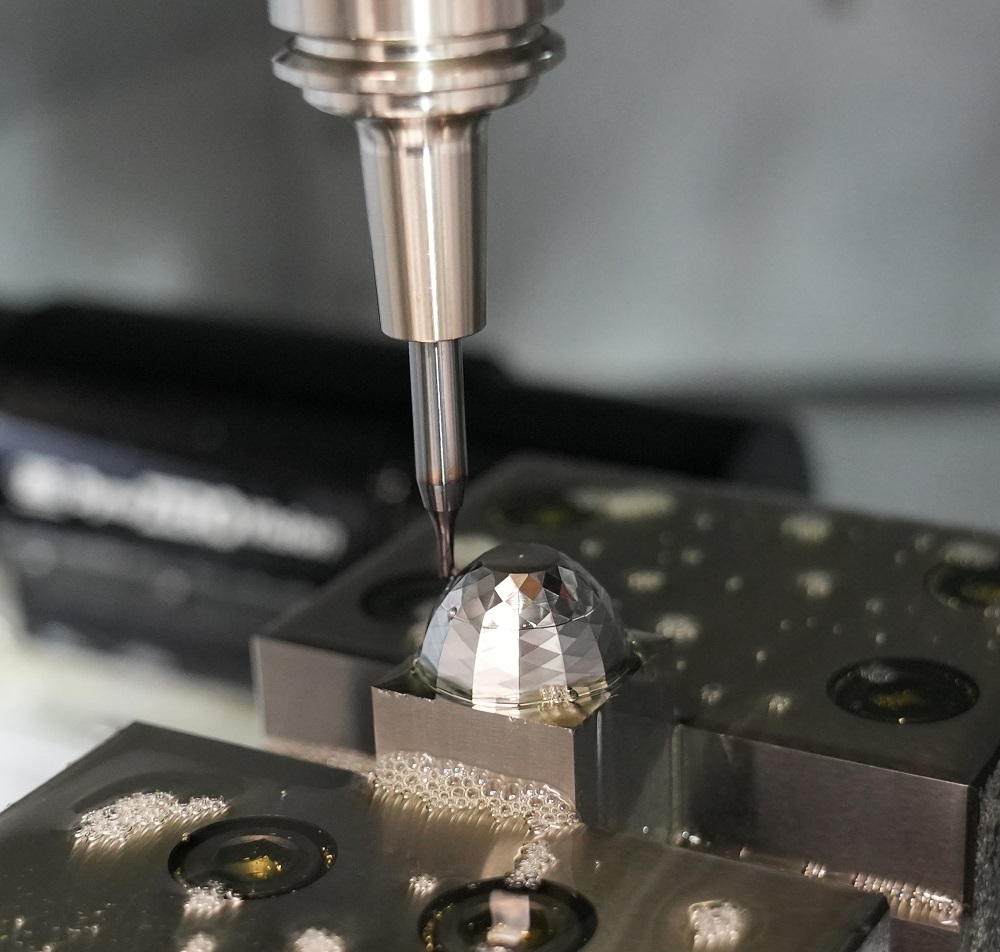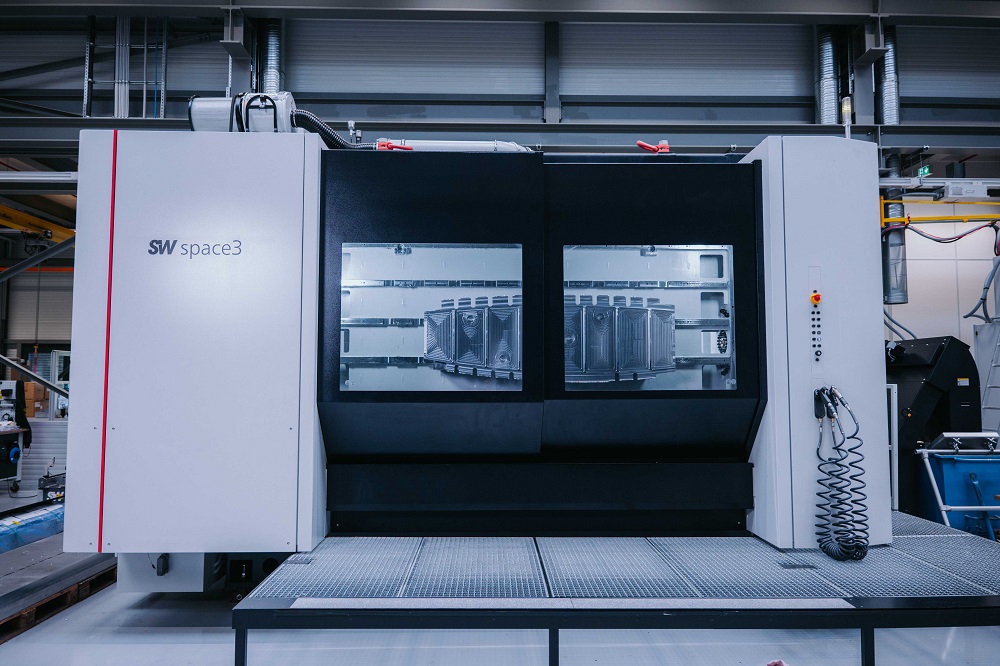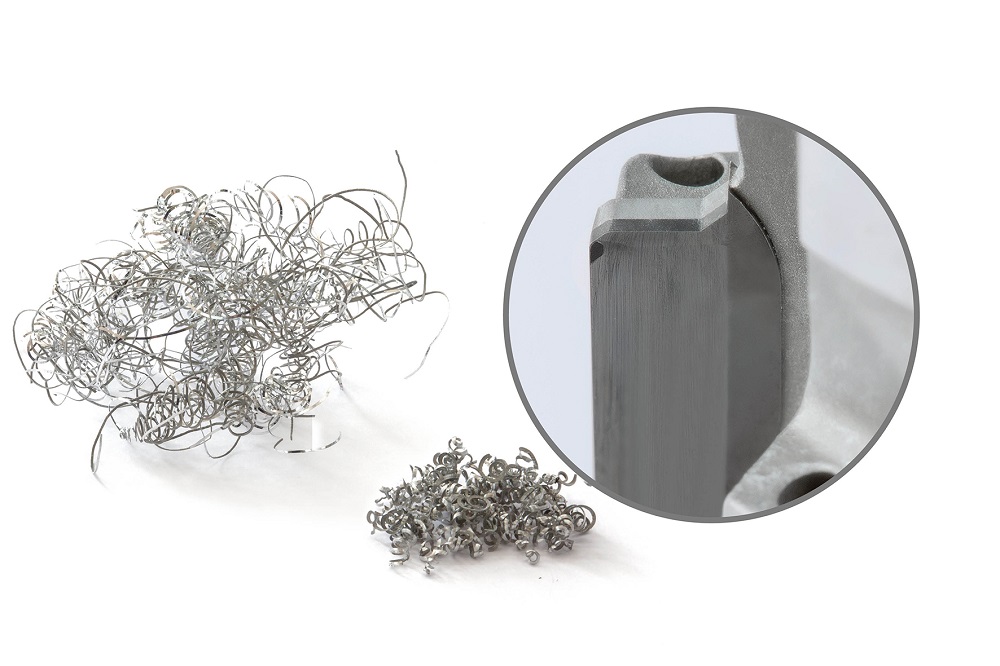For many years now, aluminium materials have been becoming more and more prevalent in many industries, a trend that continues to this day. While lightweight construction and corresponding materials and structures area historically important aspect of the aerospace sector, the use of aluminium to reduce weight in automobile manufacturing is increasing steadily, really taking off recently due to electromobility.
Aluminium and aluminium alloys are in principle easy to machine. As the cutting forces are low, high cutting data and long tool life are achievable with appropriate process planning. However, aluminium alloys have some special features that require mastering. The geometry of the component and ever-increasing demands on tolerances and process capability pose additional challenges when machining this popular and versatile material.
Aluminium alloys sub-divide into the principal categories of cast alloys, wrought alloys and powder-metallurgical alloys, whereby mainly the first two play a role in machining. For cast alloys, various alloy elements and corresponding casting methods create the component properties. When casting, it is important to come as close as possible to the part’s final form to simplify machining.
‘Near net shape’ technology is today prevalent in mass production in particular.When machining cast parts, the silicon content is decisive with regard to the alloy element as it has a powerful effect on wear and tool life. For wrought alloys as well, it is the alloy elementsthat bring about component properties. The silicon content is lower here though, enabling chip-less ductility. It is possible to use other alloy elements to achieve good strength and stability, as well as fatigue strength. Cold- or warm-worked alloys are the result, which are processable into wrought material prior to machining.
Mapal says that the aerospace industry deploys its tools both for part machining – manufacturing components to form assemblies such as fuselage or wing sections- as well as for the final assembly where individual sections of the entire aeroplane come together.
Most aluminium part machining is from solid material. Machining rates of over 90% call for as much raw material machining in as little time as possible. Powerful tools are key here. The tools must meet a wide variety of requirements in final assembly.
Not only is aluminium prevalent here, other lightweight materials like titanium and fibre-reinforced plastics also require machining in one machining step. These so-called ‘stacks’ are material combinations that pose a particular challenge as the machiningcharacteristics of the different materials are very different and the tools have to meet varying requirements.
Weight reductions are also a primary concern in the development of electric vehicles. After all, every kilogram saved means more range and less CO2. In machining for electric vehicles, established processes and tools are very good for producing some of the parts. However, there are inevitably new systems and components in e-vehicles that require redevelopment due to their function in terms of geometry and precision and/or material properties. Precision toolmaking companiesmust deliver answers when it comes to scaling production volumes in the automotive industry and the habitual demands on process stability, consistent parts quality and attractive price levels.
One example of special requirements are electric motor housings. The large stator bore with a diameter tolerance in the IT6 to IT7 range and circularity and cylindricity of 20-30 µm or less, combined with other functional surfaces for accommodating rotors and transmission elements,requires the highest degree of precision with regards to shape and precision tolerances.
Large battery trays are another example. Their main structure consists of extruded profiles made of aluminium with low silicon content. The challenges here are to keep chip and burr formation under control and to machine these very large parts using economical cutting data without vibration. This strategy also applies to the trend of mega and giga castings, where large-scale structural parts are no longer made of individual parts but cast as a single piece. The components’ large size and tendency to vibrate call for special tool geometries that facilitate low-vibration machining with a high degree of precision. New long-chipping aluminium alloys, whose machining characteristics first require mastering, represent a furtherrelated challenge.
Mapal has an extensive product and application portfolio thanks to many years of experience in thefield of aluminium machining. The range includes established bore machining applications like fine boring, reaming and boring. Notably, the company’s guide pad technology for fine boring achieves high precision for diameters, circularity and cylindricity.
For tools with fixed blades for reaming and boring, Mapalsays it offers a one-of-a-kind range for PCD tools. The series includes everything from tools for a single diameter with a chamfer to very complex tools for multi-stage bore geometries. For drilling into solid, there is also a large selection of solid-carbide drills and drills with indexable inserts. Deep drilling and dry drilling are a particular challenge as special geometries and expertise are necessary for both.
For the milling of aluminium, Mapal offers a broad range that includes face milling cutters, high-volume milling cutters, end milling cutters and special designs. Series with cassettes, inserts or a fixed design are available for face milling cutters, for example. PCD and different varieties of carbide serve as the cutting material and are available for various cutting depths in combination with the required surface finishes and profiles. In this way,users can create special cross-cut structures for sealing faces, for example. In addition to the universally applicable range of end milling cutters made of solid carbide or with PCD blades, Mapal has products that cater to special requirements such as high precision, parts vulnerable to vibration or high-volume machining.
This product range and manufacturing expertise form the basis for optimal machining processes for aluminium parts. But the tool itself is not the only factor. Only through the art of engineering can the wide-ranging product and application portfolio provide the optimal solution.
According to the Mapal philosophy, the optimal solution can only be the one tailored precisely to the needs of the customer. The expectation is not over-engineering but rather machining processes designed around specific requirements. Mapal sees itself as a solution provider and technology partner and, as opposed to a conventional tool supplier, does not only consider technical aspects but also tries to put itself in the customers shoes.
More information www.mapal.com



















